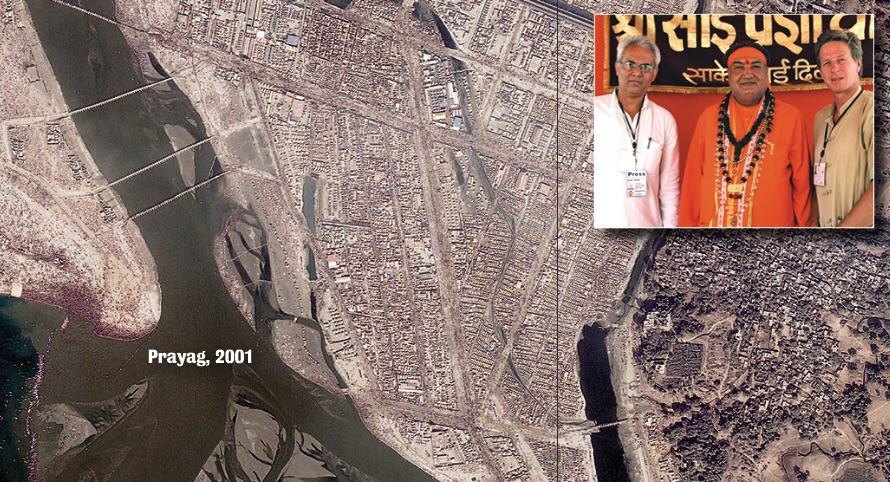BY RAJIV MALIK
When my friends and relatives–and even strangers – learn that I bathed at the Maha Kumbha Melas of Haridwar, Prayag, Nashik and Ujjain, they treat me with great reverence. Adults bow before me with folded hands, and children touch my feet. To appreciate this, one must grasp the fervor of Siva bhakti (worship) and the magic of India.
Great Siva devotees have told me again and again that to pilgrimage to even one of India’s four Maha Kumbha Melas guarantees spiritual salvation at death. They further claim that to attend all four of these Melas raises one to the status of a jivanmukti, one who is even now spiritually liberated, yet lives on in a human body. By some magical dance of karma, I have been blessed to attend all four of these grand events as a correspondent for Hinduism Today. I may not be a jivanmukti because of this, but I am certainly a changed man, poised and ready for a better life. Of this there can be no doubt.
My first Kumbha Mela was in Haridwar in 1998. It was the most difficult of the four by far. For starters, it took place during the last century. Okay sure, that was only six years ago, but in many ways it really was like going back in time 100 years or more. We had no access to telephones, cell phones were not yet popular and there were no Internet and e-mail connections. Provisions for lodging, food and transportation were minimal at best, and we had no official press accreditation from central government, state government or the Mela administration. Still, as I returned home to New Delhi after the event had concluded, I could not wait to go back for more of the magic of the Mela.
Only Amit Kumar and I reported on the next Maha Kumbha Mela in Prayag in 2001. A new millennium had just begun and everything really did feel different. For the first time in history, a Mela was wired with cyber cafes providing Internet and e-mail facilities everywhere and in all directions. The camp we stayed in was prestigious, having been jointly established by Muniji of Parmarth Niketan and Swami Veda Bharati, a disciple of Swami Rama. Telephones were also available for international calls and fax transmission. The public relations department of the Uttar Pradesh Government even provided the press with background information about the Kumbha Mela, as well as a list detailing where dignitaries and sadhus were staying. This was a huge improvement over Melas of the past.
This Prayag Mela was the largest in history. Not surprisingly, no other city hosting a Mela had ever set up such a large township to accommodate incoming pilgrims. During that ten-day celebration an estimated one hundred and fifty million souls took their blessed dip in the convergence of the holy Ganga and Yamuna rivers. Just witnessing this was an awe-inspiring experience.
The next Mela in Nashik was organized extremely well by the Maharashtra government. All of the hi-tech facilities had improved even more since Prayag. Here, everything from supervising the Mela to establishing and enforcing high-level security controls was being done with computers. The use of cell phones was also widely prevalent, even by the sadhus. None of this seemed to have any effect on the spirituality of the event. Everywhere and always, the atmosphere was divine and uplifting. Both in Nashik and in Triambkeshwar where the shahi snans (baths of the holy men) took place, we could actually feel Divinity in the air. Never before had we been able to cover the grand procession of the sadhus to their ceremonial bath from such close quarters.
I feel extremely blessed that I was chosen to report on India’s four Maha Kumbha Melas. All of the various mundane difficulties I encountered along the way only enriched my inner experience of it all. I don’t know why this is true, but it is. Now I am immersed in retrospect–looking back and enjoying it all again. It’s better the second time around. Yet all I really want to do is go back again.
